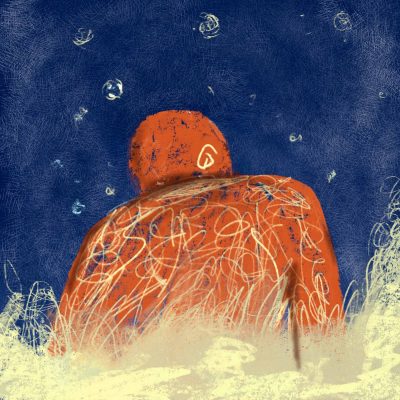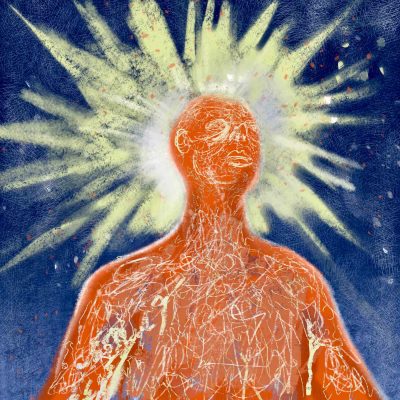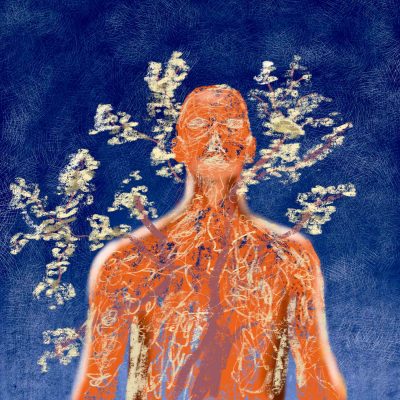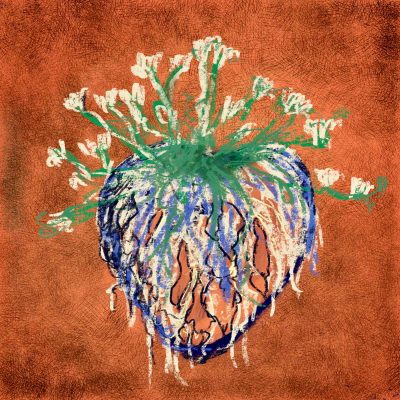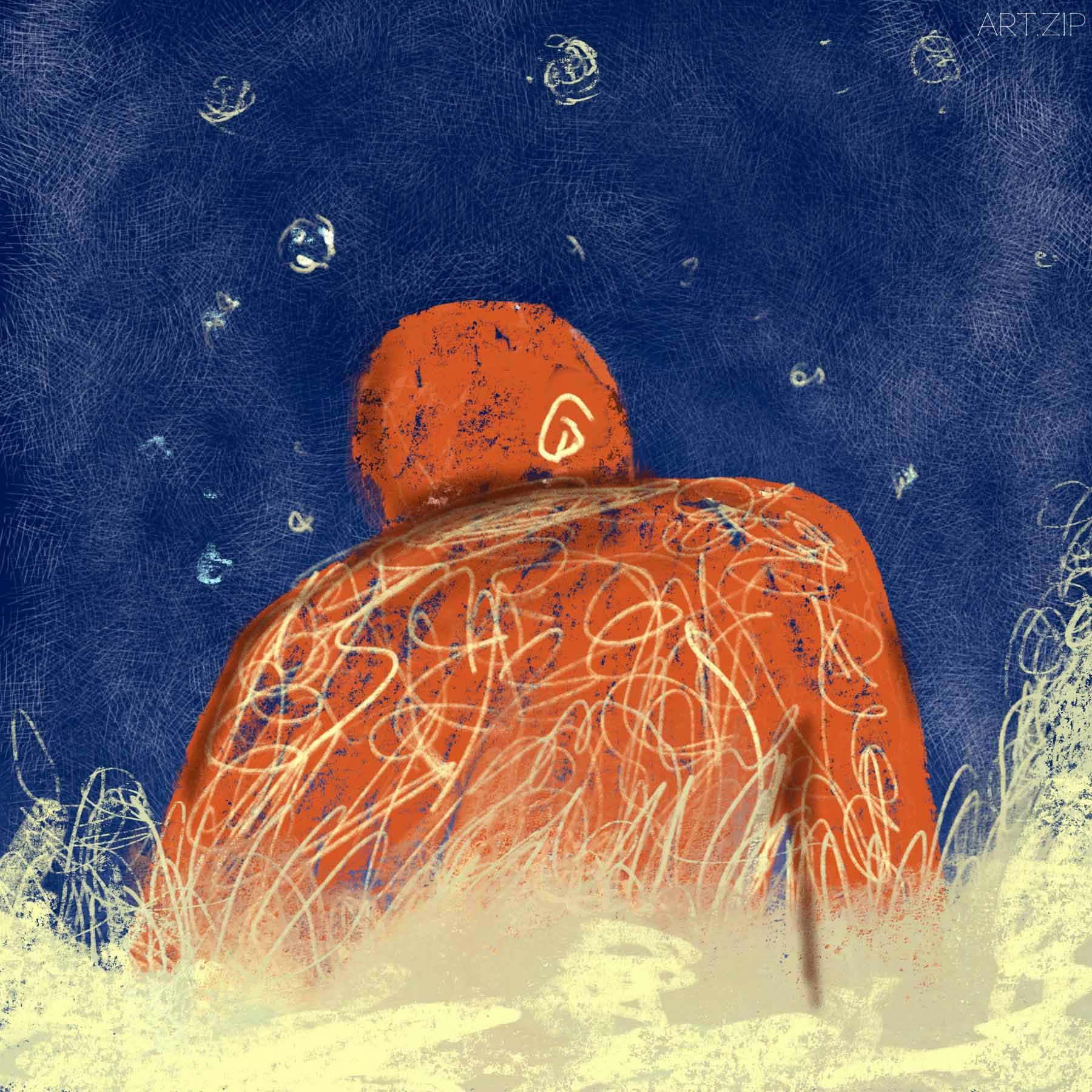
Zhengwei Fan combines layered watercolors and pencil on paper as a meditative form of image-making. With a background in illustration and visual storytelling, the artist has stated that, “Drawing is, for me, a way of dwelling. It is a slow, tactile practice that keeps me close to what is fleeting and fragile.” His practice is grounded in a deliberate process of slow observation, where his paintings often exude states of solitude. These observational sketches have reflected on loneliness, slow geological time, and a present ecological grief for vanishing landscapes.
樊征偉(Zhengwei Fan)以分層水彩與鉛筆素描結合紙本創作,形成一種冥思性的圖像生成方式。擁有插畫與視覺敘事背景的藝術家曾坦言:「繪畫於我而言是一種棲居的方式。它是一種緩慢的、觸覺性的實踐,讓我貼近那些轉瞬易逝之物。」他的創作根植於有意識的慢速觀察過程,畫作中常瀰漫著孤寂的生存狀態。這些觀察性素描折射出孤獨感、緩慢的地質時間,以及對消逝景觀的當下生態哀悼。
.jpg)
Whispers of the North (2020). Courtesy of the artist.
The series, Whispers of the North (2020), is a triptych of three isolated landscapes in Iceland. With subdued colours and restrained strokes, each elegiac piece portrays the quiet resonance of memory, a sombreness for that which is disappearing, and a conscious effort through his process of drawing these sites, to understand and retain our affective bond with certain places. Whereas his series of four paintings, Going Inward (2025) examines psychological space, with symbolist imagery contemplating a developing consciousness within a human body, which serves as a receptacle for transformation.
《Whispers of the North》(2020)系列以三聯作形式呈現冰島三處孤絕景觀。每幅輓歌式的作品以克制的色彩與筆觸,描繪記憶的靜謐共振、對消亡之物的沉鬱哀愁,以及通過繪製這些場域的過程,試圖理解並維繫我們與特定地方的情感紐帶。而其四聯畫《Going Inward》(2025)則探入心理空間,以象徵主義意象凝視人體這一轉化容器內部逐漸甦醒的意識。

Exhibition View. Courtesy of the artist.
The colours are bright red, orange and the strokes drawn with paint and pen are gestural portraying a process of transformation within a state of human solitude and contemplation. The Back of Silence (2025) is the back of a figure, slumped to portray looking inward in contemplation; and there is energy bursting from the body through the swirling marks on the paper. In Awakening Light (2025) the figure stands facing out with an aura of bursting yellow light around its head, illustrating an inner strength, a new perception. With The Blooming Body (2025) the artist has drawn plants floating around the figure; the two are entwined in a symbiotic relationship. Transformation takes place across the sequence of these paintings. The fourth piece, The Heart in Bloom (2024), is the image of a human heart overlayed with sprouting organic life forms.
畫面採用鮮明的紅與橙色,顏料與筆墨的筆觸充滿動勢,刻畫人在孤寂與沉思狀態中的蛻變過程。《The Back of Silence》(2025)中人物背影低垂,呈現向內觀照的姿態;紙面上盤旋的痕跡讓能量從身體迸發。《Awakening Light》(2025)裡人物正面而立,頭部環繞迸發的黃色光暈,昭示內在力量與新覺知。《The Blooming Body》(2025)中植物縈繞人形,二者交織為共生關係。整個畫序逐步展開蛻變敘事,第四幅《The Heart in Bloom》(2024)更以萌芽的有機生命形態覆蓋人類心臟意象。
Intimacy, vulnerability and openness are present within these depictions of interconnectedness and the transformative power of inner meditative space. With this series, Zhengwei Fan continues to explore and develop his visual language, and has related that, “More recent works turn inward, reflecting on solitude not as absence, but as a condition of perception — where memory leaves its trace like pigment on paper.’ These artworks are created through a slow attentive process reflecting on the transitory nature of things, yet resisting with the quiet presence and awareness they portray.
這些描繪互聯性與內在冥想空間轉化力的作品中,貫穿著親密感、脆弱性與開放性。通過此系列,樊征偉持續拓展其視覺語言,並坦言:「近期作品轉向內在,將孤獨不再視為缺失,而是感知的條件——記憶如顏料滲入紙頁,在此留下痕跡。」這些作品通過緩慢而專注的創作過程,既反思萬物易逝的本質,亦以所描繪的靜默存在與覺知姿態與之抗衡。
Text by Lauren Dyer Amazeen
Published on 13 Oct 2025

